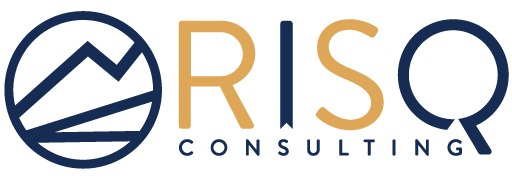The Benefits Of Mindful Eating
This article is from RISQ Consulting’s Zywave client portal, a resource available to all RISQ Consulting clients. Please contact your Benefits Consultant or Account Executive for more information or for help setting up your own login.
Taking time to be mindful of your eating process and not focusing on restricting calories could enhance your awareness of the experience, improve your relationship with food and help you lose weight. Mindful eating can be an essential practice in today’s world, where multitasking is common practice. Multitasking while eating can lead to less satisfaction with your meals, less awareness of the food, and often, overeating.
This article explores mindful eating, its benefits and how to practice this healthy approach.
What Is Mindful Eating?
Mindful eating is a type of mindfulness meditation that focuses on being fully present and aware of one’s feelings, thoughts, physical sensations and environment during meals. As such, mindful eating makes you fully aware of the eating experience and your thoughts and feelings about food.
This concept encourages focusing on preparing and consuming your food in a distraction-free environment. By thinking about the food, you may become more aware of the signals your body sends to your brain that indicate satisfaction and fullness, which can help you improve your general health and well-being.
Benefits of Mindful Eating
Mindful eating offers several physical and mental health advantages, including the following:
- Better body cue recognition—You’ll better understand your body’s hunger, craving and fullness cues. You can also establish a better overall relationship with food when aware of your cues.
- Overeating prevention—Mindful eating allows you to check in with yourself and pause snacks or meals if you aren’t actually hungry. A pause can help you slow down and break the cycle of overeating and binge eating.
- Healthier food choices—When you’re more aware of how food makes you feel, you may choose more nutritious foods that can make you feel energized.
- Stress reduction—Mindfulness-based exercises, including mindful eating, can help reduce cortisol (or stress) levels.
- Weight loss—Although research is mixed on the definitive connection between mindful eating and weight loss, you’re likely to lose weight if you properly listen to your hunger cues.
Mindfulness practices may also help improve anxiety, depression, eating disorders and stress symptoms.
Tips for Mindful Eating
Mindful eating may sound simple, but it takes practice. Consider the following mindful eating tips:
- Honor your food. The mindful practice starts before the food is on your plate. It’s important to acknowledge where the food was grown and who prepared the meal.
- Evaluate your hunger. It’s equally important to continue to assess your appetite while eating. Checking in with your physical hunger and satiety sensations can help you learn your cues.
- Start with small portions. Modest portions can help you respect your hunger and satiety cues. Single-serving portions may also look more substantial on smaller plates or bowls.
- Pay attention to your food. Engage your senses and notice what you see (e.g., food texture, color and appeal), smell, feel (e.g., texture and temperature), taste and hear (e.g., crunch).
- Eliminate distractions. Being distracted while eating can fuel a negative relationship with food or lead to overeating or emotional eating. Also, avoid eating in a bedroom, living room or vehicle.
- Slow down. Make a conscious effort to chew your food more to aid digestion and allow more time to recognize your body’s cues.
- Don’t skip meals. Going too long without eating increases the risk of extreme hunger, which may lead to a quick and easy food choice—which is not always a healthy one.
Multitasking while eating has become the new normal, but you can be in control and aware of the process and your feelings. You can try the eating approach at your next meal or start small by attempting the practice once a week—for example, establish a “Mindful Monday.”
Contact a registered dietitian if you need additional help or guidance with mindful eating or general eating habits.
- Published in Blog
New Year, New Me! No Follow Through? Back to Old You…
By Taylor Brouillet-Stock, Account Specialist
Did you make any New Year’s Resolutions for 2022? Now that it’s February, I think it’s time to take a step back and evaluate how those resolutions are coming along. New Year’s Resolutions can be hard to keep, especially if you plan to make drastic changes in your life and do a complete 180 from December 31st to January 1st.
I have noticed (and I am guilty of this as well) that people tend to put a lot of pressure on themselves to fulfill certain resolutions by a certain time in the year. In my experience, and from what I have witnessed from others, when those resolutions aren’t met by that arbitrary due date it can make you feel like a failure or that your entire year is ruined. I think that having goals for your life and wanting to build better habits is a great thing! But I also think that we shouldn’t put too much pressure on ourselves or put ourselves down if things don’t go exactly the way we expect them to.
In this article, James Clear lists 30 one-sentence stories from people who have built better habits in their lives. I think this is a great example of how making just a slight change in your behavior can result in big changes down the road that help you build a better, healthier lifestyle. If you are anything like me and struggle to keep New Year’s Resolutions, give this article a read as it may inspire you to make those small and manageable changes to bring you a happier way of life!
- Published in Blog
Employee Wellness Trends to Watch in 2022
This article is from RISQ Consulting’s Zywave client portal, a resource available to all RISQ Consulting clients. Please contact your Benefits Consultant or Account Executive for more information or for help setting up your own login.
The workplace continues to change as the two-year mark of the COVID-19 pandemic approaches—and employer-sponsored wellness programs are no different. The pandemic has put employee health and wellness in the spotlight, and employers’ wellness initiatives will continue to grow in 2022. According to the Business Group on Health’s 2022 Large Employers’ Health Care Strategy and Plan Design Survey, employers recognize that COVID-19 may have long-term impacts on employees. Notably, many employers anticipate increasing medical services due to delayed care (94%) and are concerned about long-term mental health issues (91%).
Given the pandemic’s immediate and lasting impacts on employee health, it’s no surprise that employers are expected to expand their wellness offerings in 2022. Here are four popular employee wellness trends to look out for in 2022.
1. Expanded Mental Health Resources
Many organizations have prioritized mental health during the pandemic. Many workers continue to battle stress and anxiety in both their personal and work lives. Not only are employees faced with changing workplace policies and responsibilities, but they are also navigating how to reconnect with friends and family. Fortunately, the mental burden of the COVID-19 pandemic has enabled more transparency and empathy around the topic, especially in the workplace.
Many employers will continue to work on ways to address employees’ short- and long-term mental health issues, as there’s a significant need and desire for mental health support in the workplace. According to a 2021 Calm for Business workplace mental health survey, 97% of employees said that employers should be trying to improve employee mental health. Consider the additional survey findings:
- 76% of employees find mental health benefits critical when evaluating a new job.
- 87% of employees feel nervous, anxious or stressed working through a pandemic.
- 80% of employees are having difficulty falling and staying asleep during the pandemic.
- 43% of employees attribute poor mental health to their job based on a lack of recognition and belonging.
Employers who are invested in their employees’ mental health often yield healthy employees who take fewer days off, contribute to positive workplace culture and are more productive. One way to address employee mental health is by ensuring mental health is an essential part of overall health care offerings. Additionally, employers may expand telebehavioral health and employee assistance program (EAPs), as well as increase the use of mental health apps. Employers who provide diverse health care resources that deliver behavioral, emotional and social services are in a great position to improve their workforce’s overall well-being.
2. Advancement of Health Equity
The pandemic has undoubtedly shed light on health disparities. Several underlying social and economic challenges (e.g., health care, income and childcare) can influence overall well-being. To tackle health inequalities, some employers are making employee benefits and wellness programs more affordable and inclusive. The goal is to ensure all employees have access to the health care they need. That can look different for every employee, so employers may start with focusing on general goals to help employees manage any chronic conditions or severe acute needs, such as cancer, or receive recommended prenatal care.
Furthermore, some health insurance providers are working with local, state and federal governments to improve health equity to ensure Americans have an equal opportunity to thrive and achieve their best health. Employers can select providers striving to make health care more affordable and accessible to all employees. Employers have a great chance to help employees maximize their full health potential by supporting efforts that advance health equity in the communities where employees live and work.
3. Increased Focus on Hybrid Work-life Balance
Employee wellness programs must continue to evolve to meet the demands of the current workforce. At this point in the pandemic, it appears the hybrid workplace is here to stay. As such, many employers are shifting their perspective of hybrid work from a novelty to the new standard in 2022; but with that shift, employers must recognize the unique challenges employees face as hybrid workers. As the boundaries between work and home are blurred, employees may experience burnout or undergo a decrease in their physical or mental health.
A healthy work-life balance seems like an unattainable goal for many Americans. Still, employers can do their best to help and offer robust resources and support, especially for hybrid or remote employees. A holistic approach helps address all aspects of the body and mind. Health plans may include access to mental health professionals and assistance dealing with stress and depression. To support varying personal responsibilities, organizations may also consider how to increase schedule flexibility or time off for mental health or recharging. Such companies may also be focusing on key performance indicators like employee satisfaction and retention. As more organizations operate in hybrid or remote settings, employees are more likely to expect such comprehensive wellness offerings from their employers.
4. Expanded Financial Wellness Resources
Money is a top stressor for employees, and the pandemic has reinforced that fact. Seventy-three percent of Americans rank their finances as their number one source of stress, according to a 2021 CreditWise survey. As the pandemic evolves, employers are uniquely positioned to support employees with much-desired financial guidance and educational resources.
First, employers should be aware of the most common financial goals of employees:
- Building an emergency savings
- Navigating cashflow changes
- Choosing the proper health insurance and benefits
- Preparing for significant life events
- Saving for retirement
Many organizations employ a multigenerational workforce, which means employees often face unique financial stressors. To provide relief, some employers offer financial wellness programs that vary in complexity but can include virtual personal financial planning meetings, tuition reimbursement and seminars. The idea is to provide a wide variety of services for the workforce. Employers can help reduce employee financial stress by exploring financial wellness resources and support options and offering attractive programs for current and prospective employees. Financial wellness is a critical component of well-being and can be a competitive offering in today’s labor market.
Conclusion
All signs indicate that mental and financial wellness will become significant pain points in 2022. The pandemic also continues to expose health inequalities and an unattainable work-life balance for many American workers. The most robust 2022 employee wellness offerings and programs will likely be employee-centered, focusing on how to provide the most comprehensive, attainable and affordable benefits. Many employees will not only need resources for handling new pandemic-related mental and financial challenges but also support for working in a remote or hybrid setting as the lines blur between their home and work lives. This year, employers are expected to explore programs and initiatives that ensure all employees have access to the physical, mental and financial benefits they need to address the pandemic’s short- and long-term impacts.
Organizations can start with evaluating current wellness initiatives and thinking about ways to improve them. To ensure offerings and investments will resonate with the workforce, it can be helpful to survey employees first and see what they find most valuable and necessary for their overall well-being after two years of living through a pandemic.
Contact RISQ Consulting today for more wellness program ideas or ways to get started.
- Published in Blog






